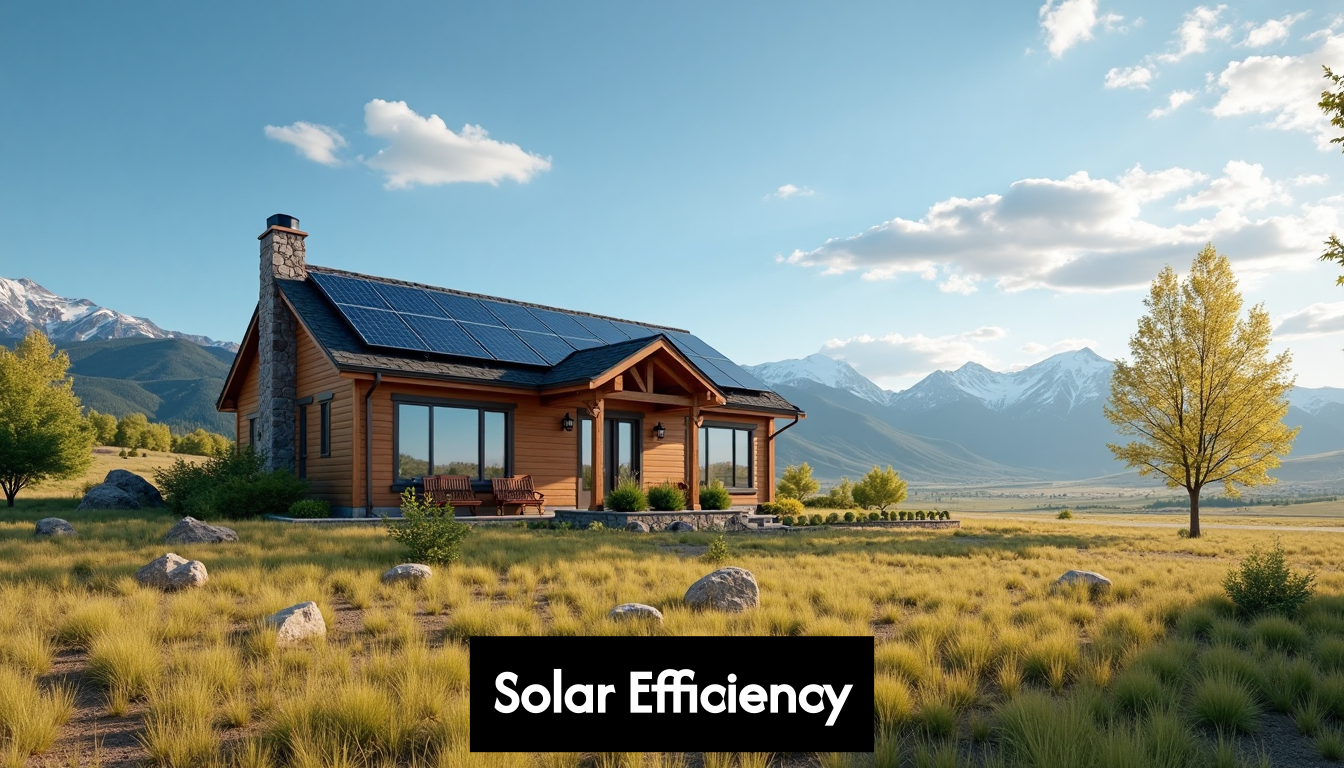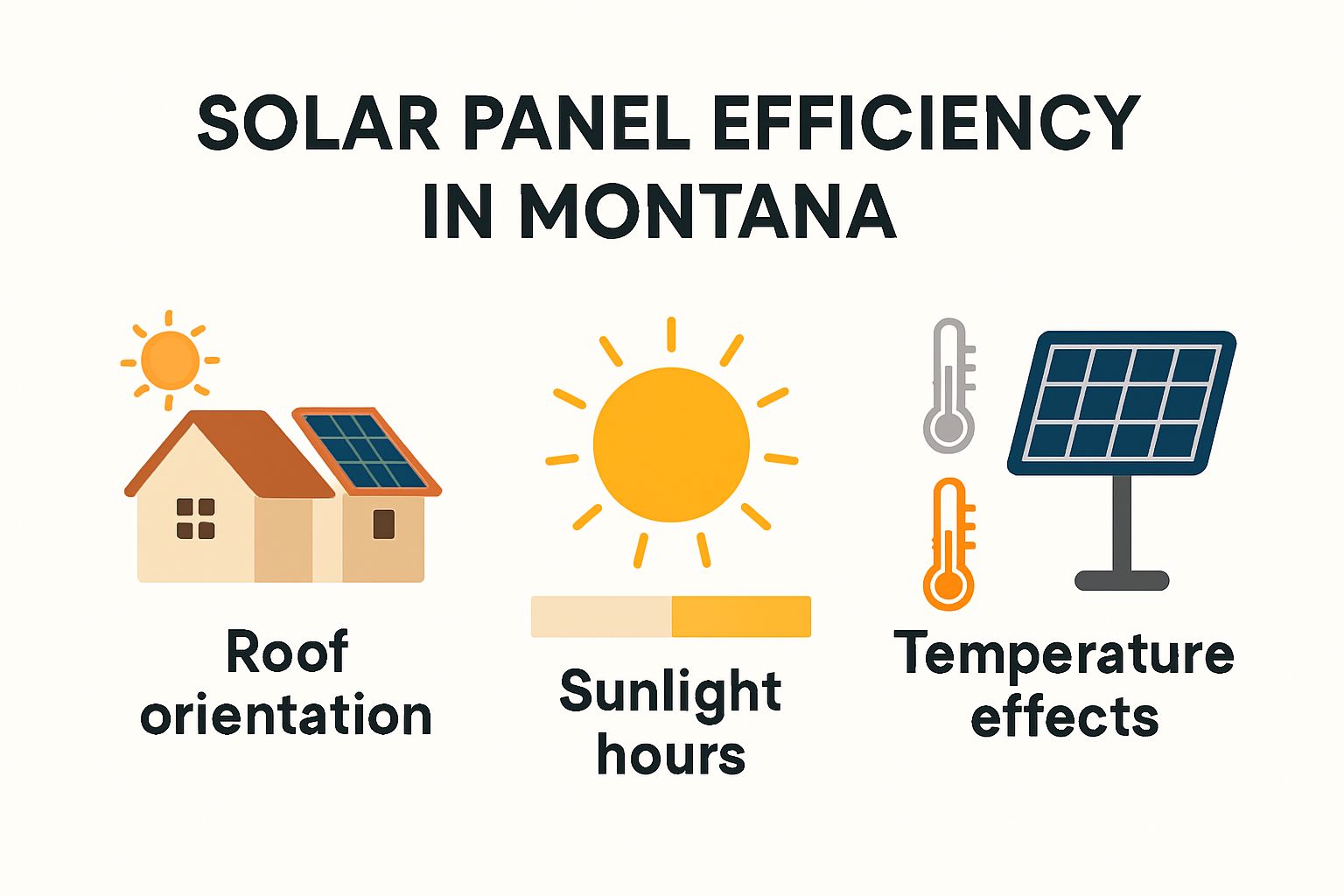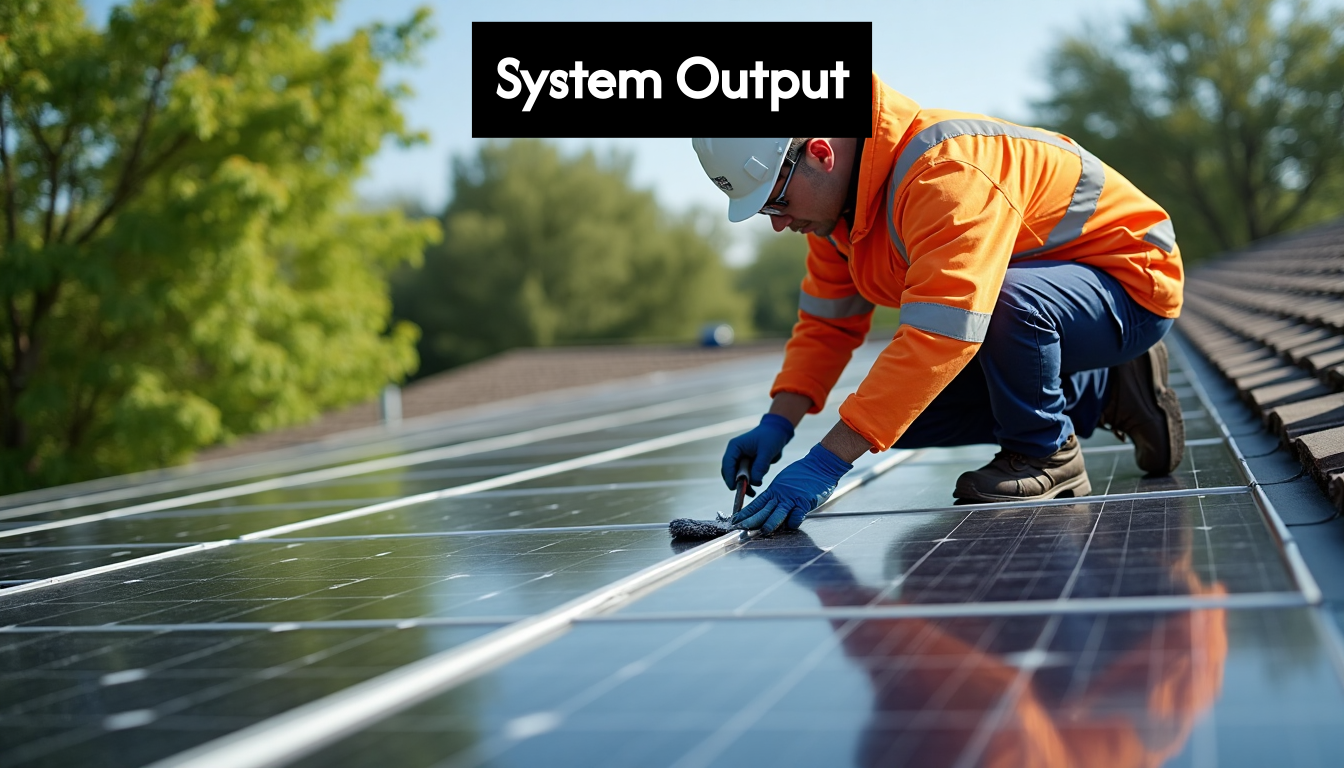Solar Panel Efficiency in Montana: Tips for 2025 Homeowners & Businesses
Contact Us

Solar panel efficiency in Montana surprises many. The state gets 201 sunny days a year which sounds promising for anyone considering solar. Yet, most people are shocked to learn that cooler temperatures in Montana actually make panels work better, not worse. Turns out, Montana’s climate can give homeowners and businesses an unexpected edge if they use smart placement and technology. Here’s what really matters if you want reliable solar savings in 2025.
Table of Contents
- Factors Affecting Solar Panel Efficiency In Montana
- Geographic And Climate Considerations
- Temperature And Performance Dynamics
- System Design And Technical Factors
- How To Measure And Improve Your Solar System's Output
- Precision In Solar Panel Efficiency Measurement
- Performance Monitoring And Optimization Strategies
- Professional Assessment And System Upgrades
- Best Solar Panels For Montana's Unique Climate
- High-Efficiency Panel Technologies
- Durability And Warranty Considerations
- Climate-Specific Performance Factors
- Maximizing Efficiency: Advice For Off-Grid And Sustainable Users
- Advanced Technology For Off-Grid Performance
- Energy Storage And Management Strategies
- Sustainable Design And System Integration
| Takeaway | Explaination |
|---|---|
| Maximize Roof Orientation | Install solar panels on south and west-facing roofs to generate up to 20% more electricity compared to less optimal placements. |
| Monitor and Maintain Regularly | Implement real-time monitoring systems and perform regular maintenance, such as cleaning panels, to optimize energy production and identify issues. |
| Select High-Efficiency Panels | Choose solar panels with efficiency ratings over 20% and superior durability to withstand Montana's variable climate conditions. |
| Utilize Advanced Energy Storage | Incorporate lithium-ion batteries and hybrid inverters for effective energy management, ensuring a consistent power supply during low-sunlight periods. |
| Invest in Professional Assessments | Schedule periodic evaluations by trained technicians to detect potential issues and upgrade components for improved efficiency. |
Factors Affecting Solar Panel Efficiency in Montana
Solar panel efficiency in Montana depends on multiple interconnected variables that can significantly impact energy production and overall system performance. Understanding these factors helps homeowners and businesses maximize their solar investment in the unique Montana climate.

Geographic and Climate Considerations
Montana's solar potential is more complex than many residents realize. The state receives an average of 201 sunny days per year, which provides a solid foundation for solar energy generation. However, solar panel efficiency isn't just about total sunlight hours.
Roof orientation plays a critical role in solar performance. South and west-facing roofs capture the most sunlight throughout the day, optimizing energy production. Panels installed on these orientations can generate up to 20% more electricity compared to less ideal placements. The angle of installation also matters, with Montana's latitude suggesting a specific tilt angle that maximizes year-round solar collection.
Temperature and Performance Dynamics
Contrary to popular belief, extreme temperatures impact solar panel efficiency. Research shows that solar panels actually perform better in cooler temperatures. While Montana experiences significant temperature variations, this can be advantageous for solar energy systems.
During summer months, high temperatures can reduce panel efficiency. For every degree above 77°F (25°C), solar panel output typically decreases by 0.5%. Montana's cooler climate helps mitigate this efficiency reduction, making the state surprisingly suitable for solar installations.
System Design and Technical Factors
Beyond environmental conditions, the technical specifications of your solar system dramatically influence efficiency. According to solar performance data, an 8 kW system in Montana can generate approximately 10,765 kWh annually, offsetting around 10.20 tons of CO₂ emissions.
Key technical considerations include:
- Panel Quality: High-efficiency monocrystalline panels perform better in varied light conditions
- Inverter Technology: Modern microinverters can optimize energy conversion
- Maintenance: Regular cleaning and professional inspections prevent efficiency degradation
Solar panel efficiency isn't a static metric but a dynamic interplay of environmental, technological, and maintenance factors. Montana residents can achieve impressive solar performance by understanding and strategically addressing these variables.
By carefully selecting equipment, positioning panels optimally, and maintaining the system, homeowners can overcome regional challenges and create a robust solar energy solution tailored to Montana's unique conditions.
How to Measure and Improve Your Solar System's Output

Measuring and improving solar system output requires a systematic approach that combines technical understanding, precise measurement techniques, and strategic performance optimization. Montana homeowners can significantly enhance their solar energy production by implementing targeted strategies and monitoring methods.
Precision in Solar Panel Efficiency Measurement
Accurately measuring solar panel efficiency goes beyond simple visual inspection. The International Electrotechnical Commission (IEC) standard 61215 provides a rigorous framework for performance assessment. This standard requires measurements under specific conditions: an irradiance of 1 kW/m², a cell temperature of 25°C, and an air mass of 1.5.
Scientific measurement protocols from photoemission research reveal that solar panel efficiency is calculated by dividing the maximum electrical power output by the product of panel area and incident irradiance under standard test conditions. This precise methodology allows homeowners to understand their system's true performance potential. Performance Monitoring and Optimization Strategies
Effective solar system management involves continuous monitoring and proactive maintenance. Key strategies include:
- Real-time Monitoring: Install digital monitoring systems that track daily energy production
- Seasonal Adjustments: Modify panel angles seasonally to maximize sunlight capture
- Regular Cleaning: Remove dust, snow, and debris that can reduce panel efficiency
Technological advances now allow homeowners to access detailed performance data through smartphone apps and web platforms. These tools provide granular insights into energy production, helping identify potential performance issues quickly.
Professional Assessment and System Upgrades
Periodic professional assessments can reveal opportunities for system improvement. Trained solar technicians can conduct comprehensive evaluations that include:
- Thermal imaging to detect panel hotspots
- Electrical system diagnostics
- Inverter performance analysis
- Recommendations for component upgrades
Investing in high-efficiency components and staying current with technological advancements can incrementally improve overall system performance. Modern microinverters and advanced panel technologies can boost energy production by 10-20% compared to older installations.
Montana homeowners committed to maximizing their solar system's output must adopt a holistic approach. This means combining precise measurement techniques, continuous monitoring, regular maintenance, and strategic technological upgrades. By treating solar energy as a dynamic system requiring ongoing attention, residents can optimize their renewable energy investment and contribute to sustainable energy production.
Best Solar Panels for Montana's Unique Climate
Selecting the right solar panels for Montana's challenging climate requires careful consideration of performance, durability, and efficiency. Research indicates that Montana receives fewer sunny days compared to the national average, making panel selection crucial for maximizing energy production.
High-Efficiency Panel Technologies
In Montana's variable climate, high-efficiency solar panels become more than just a luxury—they're a necessity. Panels with efficiency ratings over 20% are particularly recommended for addressing the state's unique environmental challenges. Brands like SunPower, Tesla, REC, Canadian Solar, Qcells, and Panasonic have demonstrated exceptional performance in low-sunlight and snowy conditions.
Monocrystalline panels typically outperform other technologies in Montana's environment. These panels feature superior temperature coefficient ratings, meaning they maintain better performance during temperature fluctuations. Their dark color also helps with snow melting, an important consideration in a state with significant winter precipitation.
Durability and Warranty Considerations
- Industry-standard warranties play a critical role in Montana's demanding climate. Homeowners should look for comprehensive protection packages that include:25-year equipment warranty
- 20-25 year efficiency warranty
- 10-year workmanship warranty
These extended warranties provide crucial protection against performance degradation caused by snow, temperature variations, and intense UV exposure. Panels with robust warranties demonstrate manufacturer confidence in their product's ability to withstand challenging environmental conditions.
Climate-Specific Performance Factors
Beyond raw efficiency ratings, Montana residents must consider panels that excel in specific environmental challenges. Key performance indicators include:
- Snow load resistance
- Low-light performance
- Temperature coefficient
- Frost and moisture resistance
Panels with higher temperature coefficients perform better during Montana's temperature swings. A good temperature coefficient means minimal power output reduction as temperatures change. Look for panels that maintain efficiency even when temperatures drop below freezing or rise during summer months.
Ultimately, selecting solar panels for Montana requires a nuanced approach. Homeowners should prioritize panels that offer high efficiency, robust warranties, and proven performance in challenging climate conditions. Consulting with local solar professionals who understand Montana's specific environmental dynamics can help make the most informed decision for long-term solar energy success.
Maximizing Efficiency: Advice for Off-Grid and Sustainable Users
Off-grid solar users in Montana face unique challenges and opportunities in creating sustainable energy systems. As solar technology advances, understanding how to maximize efficiency becomes crucial for those seeking complete energy independence.
Advanced Technology for Off-Grid Performance
Modern solar systems now leverage AI-powered technologies that dramatically improve energy management. These intelligent systems feature remote monitoring capabilities that help users track and optimize energy production in real-time. With current solar panel efficiency ratings reaching around 20%, off-grid users can now generate significantly more power than previous generations of solar technology. Cutting-edge panel technologies like Aiko's Neostar 2P series have pushed efficiency boundaries to 24.3%, offering unprecedented energy generation potential for off-grid installations. This technological leap means Montana residents can generate more power with fewer panels, reducing overall system complexity and installation costs. Energy Storage and Management Strategies
Successful off-grid solar systems rely on more than just high-efficiency panels. Strategic energy storage and management are critical components of a sustainable setup. Recommended approaches include:
- Advanced Battery Systems: Lithium-ion batteries with smart energy management
- Hybrid Inverter Technologies: Systems that optimize energy conversion and storage
- Load Balancing: Intelligent distribution of energy across different household needs
Users should consider installing battery systems that can store excess energy during peak production times. This approach ensures consistent power supply during low-sunlight periods, which is particularly important in Montana's variable climate.
Sustainable Design and System Integration
Off-grid solar users must take a holistic approach to energy efficiency. This means integrating solar systems with energy-efficient appliances, implementing passive solar design principles, and continuously monitoring system performance.
Consider energy consumption patterns and design your system to match specific household needs. This might involve:
- Conducting a comprehensive energy audit
- Investing in high-efficiency appliances
- Implementing passive heating and cooling strategies
Montana's unique climate presents both challenges and opportunities for off-grid solar users. By combining advanced technology, strategic energy management, and thoughtful system design, residents can create robust, sustainable energy solutions that provide reliable power while minimizing environmental impact.
The future of off-grid solar in Montana is not just about generating electricity—it's about creating intelligent, adaptive energy ecosystems that respond to changing environmental conditions and user needs.
Frequently Asked Questions
What factors affect solar panel efficiency in Montana?
Solar panel efficiency in Montana is influenced by geographic and climate considerations, temperature dynamics, and system design. Key factors include roof orientation, panel quality, and regular maintenance.
How can homeowners improve their solar system output?
To improve solar system output, homeowners should implement real-time monitoring, perform regular panel cleaning, and schedule professional assessments to identify any performance issues or upgrade opportunities.
What are the best solar panels for Montana's climate?
High-efficiency monocrystalline panels with efficiency ratings over 20% are recommended for Montana's climate. Brands like SunPower, REC, and Panasonic offer panels designed to perform well in variable weather conditions.
How does temperature affect solar panel performance in Montana?
Cooler temperatures in Montana actually benefit solar panel performance, as efficiency typically decreases by 0.5% for every degree above 77°F. This makes Montana's climate favorable for solar installations despite seasonal temperature swings.
Ready to Unlock Superior Solar Efficiency in Montana?
Montana homeowners and businesses often struggle with unpredictable sunlight, harsh winters, and the unique challenge of optimizing solar panel efficiency in a variable climate. You want lower bills and reliable green energy but finding the best technology, placement, and maintenance can feel overwhelming. This article highlighted the importance of smart system design, advanced monitoring, and investing in high-efficiency panels to truly maximize your savings and sustainability.
Turn education into action today. The solar experts at Ellingson Roofing LLC have helped countless Montanans achieve reliable, high-performing solar setups tailored for our state’s unique needs. Visit our Montana solar resource hub for practical tips, incentive information, and custom estimates. Don’t wait—discover your path to optimal solar efficiency, reduced energy costs, and a cleaner Montana. Request a consultation or connect with us directly to get started now.





